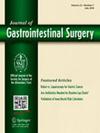Exploring rural-urban differences in the receipt of nonelective cancer-specific gastrointestinal surgery using a multilevel mixed-effects approach
IF 2.2
3区 医学
Q3 GASTROENTEROLOGY & HEPATOLOGY
引用次数: 0
Abstract
Background
Rural communities constitute a populace marked by various social challenges influencing health outcomes. As such, nonelective surgeries for cancer may have a disproportionate impact on rural populations. We explored patient and county-level factors contributing to differences in the receipt of nonelective cancer-specific surgery between rural and urban residents.
Methods
This retrospective study included adult patients captured in the Surveillance, Epidemiology, and End Results–Medicare data between January 2008 and December 2015 with an incident stage I to IV cancer of the stomach, liver/intrahepatic bile duct, pancreas, gallbladder/other biliary origin, or small intestine who underwent a cancer-specific surgery. The primary outcome was a nonelective cancer-directed surgery among rural vs urban residents. We conducted a multivariable mixed-effects logistic regression model to adjust for confounders while accounting for county-level clustering.
Results
The sample included 10,136 patients who underwent a surgical intervention; 2941 (29%) were nonelective. The incidence of nonelective surgery was lower among rural than urban patients (351 [27%] and 2590 [29%]; P = .05). There was no statistically significant difference in the unadjusted and adjusted odds of nonelective surgery between rural and urban residents (odds ratio, 0.88; 95% CI, 0.76–1.03; P = .11; adjusted odds ratio [aOR], 0.86; 95% CI, 0.72–1.02; P = .080). In addition, high social vulnerability index (SVI) counties or Black race was significantly associated with increase odds of nonelective surgery (aOR, 1.33; 95% CI, 1.07–1.65; P = .009; aOR, 1.49; 95% CI, 1.26–1.77; P < .0001, respectively).
Conclusion
This study found no difference in the odds of receiving nonelective surgery for gastrointestinal foregut cancers between rural and urban populations. However, Black race and high SVI were associated with higher odds of the receipt of nonelective surgery. Further research is warranted to explore whether disparities in clinical outcomes exist despite the comparable likelihood of receiving nonelective surgery between rural and urban communities.
使用多层次混合效应方法探索接受非选择性癌症胃肠道手术的城乡差异。
背景:农村社区人口面临着各种影响健康结果的社会挑战。因此,癌症非选择性手术对农村人口的影响可能更大。我们探讨了导致农村居民和城市居民接受非选择性癌症特异性手术差异的患者和县级因素:这项回顾性研究纳入了 2008 年 1 月至 2015 年 12 月期间 SEER-Medicare 数据中记录的接受癌症特异性手术的 I-IV 期胃癌、肝癌/肝内胆管癌、胰腺癌、胆囊癌/其他胆管癌或小肠癌的成年患者。主要结果是农村居民与城市居民的非选择性癌症定向手术。我们建立了一个多变量混合效应逻辑回归模型来调整混杂因素,同时考虑县级聚类:样本包括 10,136 名接受手术治疗的患者,其中 2,941 人(29%)为非选择性手术。与城市患者相比,农村患者的非选择性手术发生率较低[分别为 351 例(27%)和 2590 例(29%);P= 0.05]。农村居民和城市居民非选择性手术的未调整和调整后几率[OR 0.88,95% CI (0.76-1.03);p= 0.11]和[aOR 0.86,95% CI (0.72-1.02);p= 0.080]无统计学差异。此外,社会脆弱指数高的县或黑人种族与非选择性手术几率增加显著相关[aOR 1.33,95% CI (1.07-1.65);p=0.009]和[aOR 1.49,95% CI (1.26-1.77);p结论:本研究发现,农村人口和城市人口接受非选择性消化道前肠癌症手术的几率没有差异。然而,黑人种族和高 SVI 与接受非选择性手术的较高几率相关。尽管农村和城市社区接受非选择性手术的几率相当,但临床结果是否存在差异还需要进一步研究。
本文章由计算机程序翻译,如有差异,请以英文原文为准。
求助全文
约1分钟内获得全文
求助全文
来源期刊
CiteScore
5.50
自引率
3.10%
发文量
319
审稿时长
2 months
期刊介绍:
The Journal of Gastrointestinal Surgery is a scholarly, peer-reviewed journal that updates the surgeon on the latest developments in gastrointestinal surgery. The journal includes original articles on surgery of the digestive tract; gastrointestinal images; "How I Do It" articles, subject reviews, book reports, editorial columns, the SSAT Presidential Address, articles by a guest orator, symposia, letters, results of conferences and more. This is the official publication of the Society for Surgery of the Alimentary Tract. The journal functions as an outstanding forum for continuing education in surgery and diseases of the gastrointestinal tract.

 求助内容:
求助内容: 应助结果提醒方式:
应助结果提醒方式:


